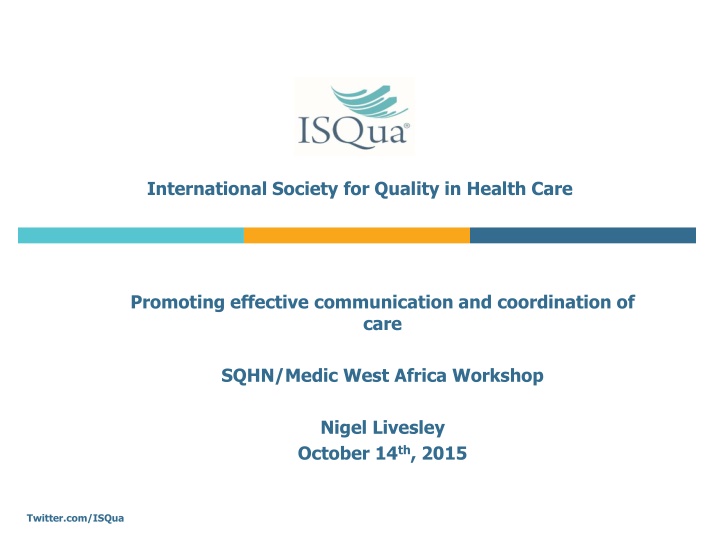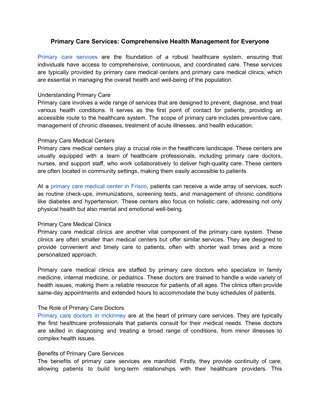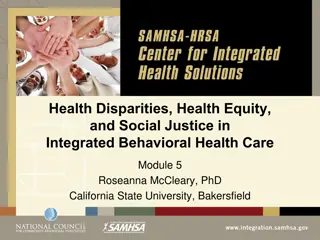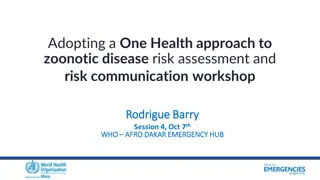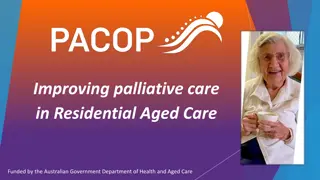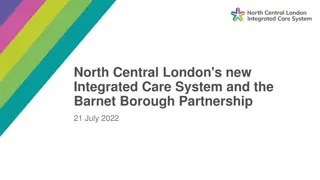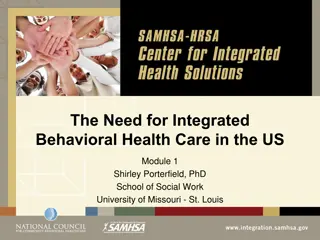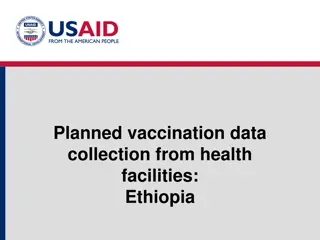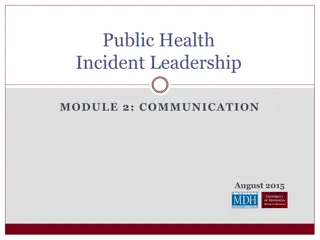Promoting Effective Communication in Health Care
International Society for Quality in Health Care (ISQua) aims to inspire improvement in healthcare quality worldwide through education, evaluation, and global connections. They have strategic alliances, diverse programs, and initiatives to enhance care delivery, with a focus on HIV prevention and maternal health in Uganda.
Download Presentation

Please find below an Image/Link to download the presentation.
The content on the website is provided AS IS for your information and personal use only. It may not be sold, licensed, or shared on other websites without obtaining consent from the author.If you encounter any issues during the download, it is possible that the publisher has removed the file from their server.
You are allowed to download the files provided on this website for personal or commercial use, subject to the condition that they are used lawfully. All files are the property of their respective owners.
The content on the website is provided AS IS for your information and personal use only. It may not be sold, licensed, or shared on other websites without obtaining consent from the author.
E N D
Presentation Transcript
International Society for Quality in Health Care Promoting effective communication and coordination of care SQHN/Medic West Africa Workshop Nigel Livesley October 14th, 2015 Twitter.com/ISQua
ISQua Mission To inspire and drive improvement in the quality and safety of healthcare worldwide through education and knowledge sharing, external evaluation, supporting health systems and connecting people through global networks. 2
ISQua Values Transparency Integrity Diversity Ethical Excellence Evidence-based 3
Strategic Alliances World Health Organization 4
Programmes Membership (287 Individual Members, 85 Institutional Members, 18 Life Members) International Accreditation Programme Education International Journal for Quality in Health Care Lower and Middle Income Countries Special Interest Groups Innovation and Systems Change Partnerships with Patients Global Leader Lecture Series International Annual Conference and Regional Meetings
22 clinics in Uganda started trying to improve care for mothers infected with HIV and their babies 6
22 clinics in Uganda started trying to improve care for mothers infected with HIV and their babies 100% 80% 60% 40% 20% 5% target 0% Jan-13 Apr-13 Jul-13 Oct-13 Jan-14 Apr-14 Jul-14 Oct-14 Jan-15 Apr-15 7
HIV transmission rates in 22 clinics in Uganda 100% 80% % children infected at 18 months 60% 40% 20% 5% target 0% Jan-13 Apr-13 Jul-13 Oct-13 Jan-14 Apr-14 Jul-14 Oct-14 Jan-15 Apr-15 8
HIV in pregnancy and during breastfeeding is dangerous Pregnant women are 8x more likely to die if infected with HIV Zaba 2013 Children are 4x more likely to die if their mother dies of HIV Nakiyingi, 2003 40% of babies born to women infected with HIV will become infected WHO 2014 9
Antiretroviral therapy (ART) works (WHO 2014) Reduces mortality in mothers and babies Reduces transmission to babies by over 90% 10
Resources are going into treating HIV during pregnancy and breastfeeding Specific programs to prevent mother to child transmission Ear marked funding Multiple global initiatives to prevent mother to child transmission 11
We should be providing great care to HIV- infected pregnant women and their infants There is clear benefit from treatment We have an intervention that works Massive efforts and resources directed to providing this intervention 12
We should be providing great care to HIV- infected pregnant women and their infants There is clear benefit from treatment We have an intervention that works Massive efforts and resources directed to providing this intervention And yet 13
HIV transmission rates in 22 clinics in Uganda 100% 80% % children infected at 18 months 60% 40% 20% 5% target 0% Jan-13 Apr-13 Jul-13 Oct-13 Jan-14 Apr-14 Jul-14 Oct-14 Jan-15 Apr-15 14
HIV care in pregnant women is worse than in non-pregnant women 15
HIV care in pregnant women is worse than in non-pregnant women Pregnant women are less likely to receive ART than non-pregnant E.g. Theuring 2014, Watson Jones 2012, Hussein 2011 Pregnant women are more likely to drop out of ART care than non-pregnant E.g. Kaplan 2008, Gwynn 2015 16
Where women start ART determines if and when they stop care (Phillips 2014) drop outs per 100 woman months Site of initial care ANC clinic HIV clinic 17
Where women start ART determines if and when they stop care (Phillips 2014) drop outs per 100 woman months Site of initial care Ante-natal period Post-natal period ANC clinic HIV clinic 18
Where women start ART determines if and when they stop care (Phillips 2014) drop outs per 100 woman months Site of initial care Ante-natal period Post-natal period ANC clinic 1.8 7.3 HIV clinic 19
Where women start ART determines if and when they stop care (Phillips 2014) drop outs per 100 woman months Site of initial care Ante-natal period Post-natal period ANC clinic 1.8 7.3 HIV clinic 3.5 5.0 20
Flawed system design is a major reason for poor care for pregnant women infected with HIV Pregnant women drop out of care after delivery more often than before Nachenga 2012, Tenthani 2014, Clouse 2013 Women diagnosed while breast feeding get better care than women diagnosed while pregnant Tenthani 2014 21
HIV transmission rates in 22 clinics in Uganda 100% 80% % children infected at 18 months 60% 40% 20% 5% target 0% Jan-13 Apr-13 Jul-13 Oct-13 Jan-14 Apr-14 Jul-14 Oct-14 Jan-15 Apr-15 22
No information on whether they were exposed infants and their mothers were coming to the clinic 100% 90% 80% 70% 60% 50% 40% 30% 20% 10% 0% Aug-12 Dec-12 Apr-13 Aug-13 Dec-13 Apr-14 Aug-14 Dec-14 Apr-15 24
Key factors for poor care Programmes are separately funded and managed HIV care and treatment Antenatal care Post- partum and post natal care Prevention of mother to child transmission They often have no connections Patients are expected to negotiate between these different systems 25
Overview Poor coordination and communication is a function of health system design Changing systems can improve coordination and communication Changing epidemiology is going to make coordination and communication more challenging 26
System issues that lead to coordination and communication problems Systems are designed for health care workers rather than patients Systems are designed for specific interventions or conditions 27
HIV transmission rates in 22 clinics in Uganda 100% 80% % children infected at 18 months 60% 40% 20% 5% target 0% Jan-13 Apr-13 Jul-13 Oct-13 Jan-14 Apr-14 Jul-14 Oct-14 Jan-15 Apr-15 28
Systems can be redesigned to improve coordination and communication 29
Trying to improve nutritional care for people infected with HIV (% patients whose nutrition status is assessed) 100 90 80 70 60 50 % 40 30 20 10 0 w19 w-20 w-18 w-16 w-14 w-12 w-10 w11 w13 w15 w17 w21 w23 w25 w27 w-8 w-6 w-4 w-2 w5 w1 w3 w7 w9
Improving health service delivery organisational performance in health systems. Pallas et al. International Health 4 (2012) 20 29 Knowledge and skills enhancement Standards and guidelines (accreditation, quality inspection) Leadership and management (supervision) Incentives Organisational structure Process re-engineering Organisational culture
Improving health service delivery organisational performance in health systems. Pallas et al. International Health 4 (2012) 20 29 Knowledge and skills enhancement Standards and guidelines (accreditation, quality inspection) Leadership and management (supervision) Incentives Organisational structure Process re-engineering Organisational culture
Improving health service delivery organisational performance in health systems. Pallas et al. International Health 4 (2012) 20 29 Knowledge and skills enhancement Standards and guidelines (accreditation, quality inspection) Leadership and management (supervision) Incentives Organisational structure Process re-engineering Organisational culture
The highest attainable standard of health Interaction between provider and patient
The highest attainable standard of health Interaction between provider and patient Culture Skills enhancement Healthcare process re-engineering Skills + re-engineering Organizational design Leadership and management Standards and guidelines Incentives $$
Seven steps to improve care Decide what you want to achieve Form a team Understand why you are not getting the results you want Develop a simple measurement system Develop some options for possible solutions Test these solutions on a small scale Implement the successful solutions in your whole clinic or department
When training and supervision are not getting results 100 90 80 70 Nutrition training 60 Delivery of commodities 50 % 40 30 20 10 0
Changing the process of care leads to partial improvement 100 90 80 70 Nutrition training 60 Delivery of commodities 50 % 40 30 20 10 0
Systems should work for patients not the other way around 100 90 80 70 Nutrition training 60 Delivery of commodities 50 % 40 30 20 10 0
Designing systems with patient input leads to better systems, better coordination and better care 100 90 80 70 Nutrition training 60 Delivery of commodities 50 % 40 30 20 10 0
Redesigning systems with patients can improve coordination and communication 45
Clinics are better able to provide care throughout pregnancy to 18 months 46
Teams approached this problem by breaking it into 4 smaller sequential problems Improve data system from pregnancy to 18m Improve care at SPECIAL VISITS (6w PCR and results visit, 6 and 12m visit, 18m visit) Improve retention of mother- baby pairs Improve care at ROUTINE VISITS 48
21 new infections averted per month in these clinics 49
Breaking down communication barriers with communities Roughly 90% of women in Salaheri village, India deliver at home Preference for home delivery No knowledge of benefits of delivering at facility Knowledge of harm from delivering at facilities Belief that they will be delivered by men Belief that health workers will abuse them 50
